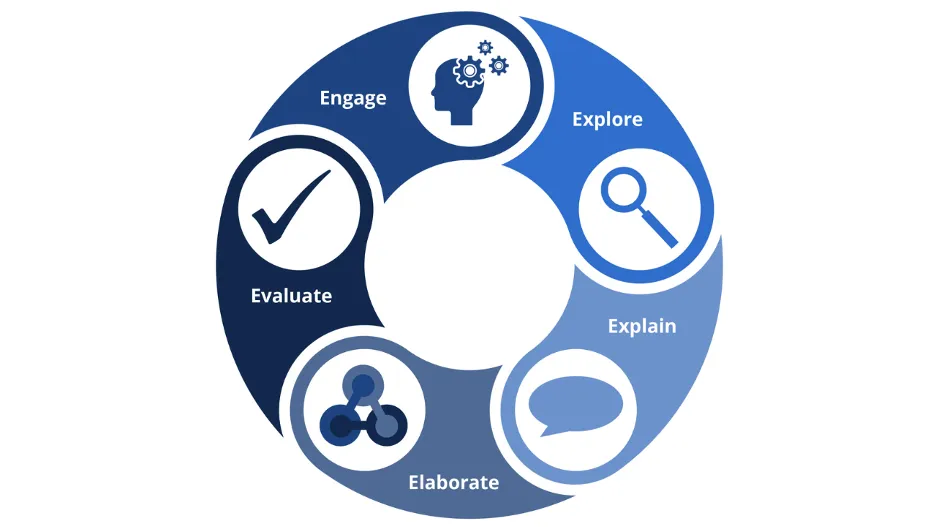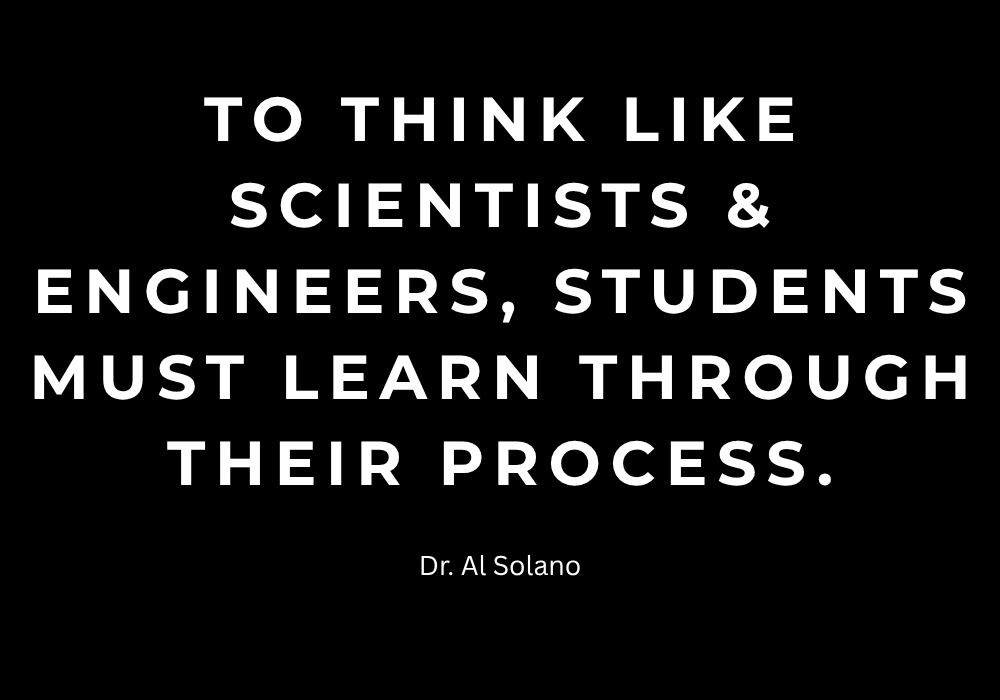Using the 5E Model to Teach STEM | 029 | Practical Ideas for Faculty
A framework that bridges curiosity and comprehension for your classroom, your lab, your students.
STEM faculty aren’t short on content. They tend to be short on time, energy, and approaches that actually stick with students.
The 5E Learning Cycle isn’t just another teaching framework. It’s a time-tested way to design lessons that spark inquiry, sustain engagement, and help students apply learning beyond the quiz.
The 5Es are applicable to any discipline and they’re especially useful for STEM. They align with how the brain learns, how scientific reasoning unfolds, and how students build durable understanding in fields that demand both precision and problem-solving.
This model will give your instruction more coherence and your students more traction.
Let’s break it down with clear prompts and STEM-specific examples.
Engage | Spark Curiosity, Not Just Compliance
Goal: Connect to prior knowledge and spark interest in what’s coming.
Instead of jumping into definitions or equations, start with a phenomenon or challenge that makes students wonder.
Example: Chemistry: Start a lesson on chemical reactions with a video of a sodium and water reaction. Ask: “Why does this happen so violently?”
Example: Math: Pose a real-world problem: “How can we model the cost of a ride-share trip with both fixed and variable rates?”
STEM Prompt: What intriguing scenario, video, image, or question could spark curiosity before you say a word?
Explore | Let Them Wrestle First
Goal: Give students a chance to investigate, model, or problem-solve before you explain.
This is where inquiry begins. Students generate hypotheses, test ideas, and uncover patterns before you introduce formal definitions.
Example: Physics: Set up lab stations with ramps and toy cars. Have students predict and test how incline angle affects velocity.
Example: Computer Science: Provide a buggy piece of code. Ask students to work in pairs to find and fix the error.
STEM Prompt: What activity allows students to interact with the concept before you define it?
Let them “do” science and math, not just hear about it.
Explain | Clarify with Purpose
Goal: Now that students have explored, connect their experiences to formal terminology, formulas, or models.
Example: Biology: After students model mitosis using yarn and colored beads, guide them to identify the stages and proper terminology.
Example: Math: Following a peer-led attempt to graph a system of inequalities, synthesize student reasoning and introduce the formal rules.
STEM Prompt: How will you connect what students just experienced to the correct scientific or mathematical language?
Tip: Explanation isn’t always a lecture. It’s a dialogue that bridges discovery and understanding.
Elaborate | Apply and Stretch
Goal: Push students to apply learning in new and challenging contexts.
Example: Biology: After learning about enzymes, present a case study of a genetic disorder caused by enzyme malfunction. Ask: “How does this affect metabolic pathways?”
Example: Engineering: Have students design a prototype for a low-cost water filtration system using only everyday materials.
STEM Prompt: What new scenario will deepen their understanding or apply it to real-world challenges?
Evaluate | Check for Learning That Matters
Goal: Assess both understanding and process—formally or informally.
Example: Chemistry: Give students unfamiliar chemical equations and ask them to predict the outcome and explain their reasoning.
Example: Math: Use a one-minute paper: “What concept are you still unsure about after today’s lesson?”
STEM Prompt: What quick way can students demonstrate understanding and misconceptions without a high-stakes test?
Evaluation is for guiding instruction, not just grading.
Final Word
If you want students to think like scientists and engineers, teach them through the process scientists and engineers use.
The 5E model helps you do that. It doesn’t require a full course redesign. Just start with one lesson.
-Choose a topic.
-Use the 5Es to organize it.
-Watch how students engage and deepen their understanding.
Direction Download: 5E Instructional Plan Template
And if you’re already using it? Get a colleague to try it. Better yet, co-plan a lesson together.
Teaching STEM is hard. But structuring it around how people actually learn makes it better.
Contact me if you’re interested in a workshop on the 5Es.
Let’s connect on LinkedIn.
Onward…
Dr. Al Solano
Founder, Continuous Learning Institute | About
Host, Student Success Podcast
A meaningful test of success is how helpful we are in contributing to our fellow human being’s happiness.



